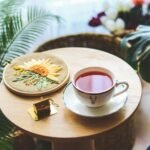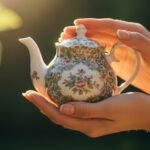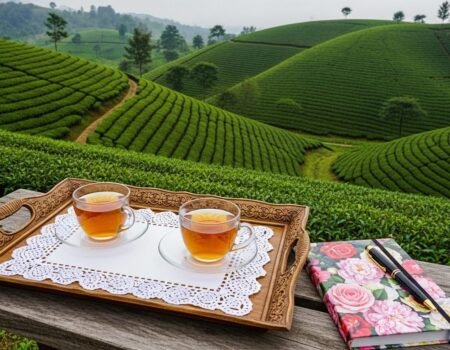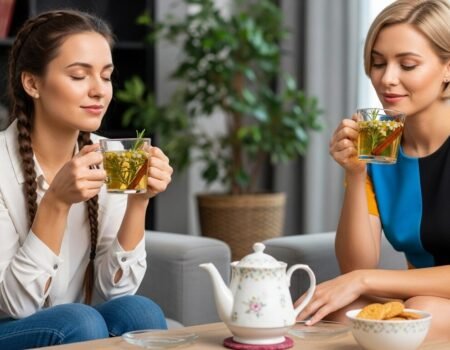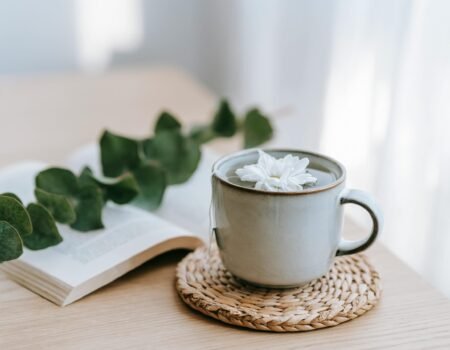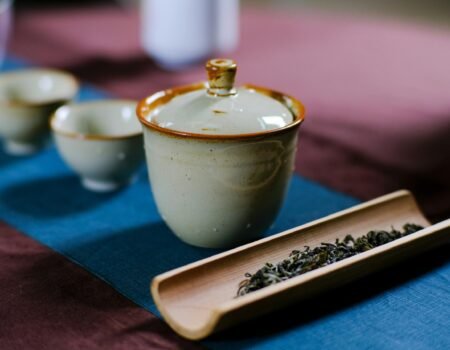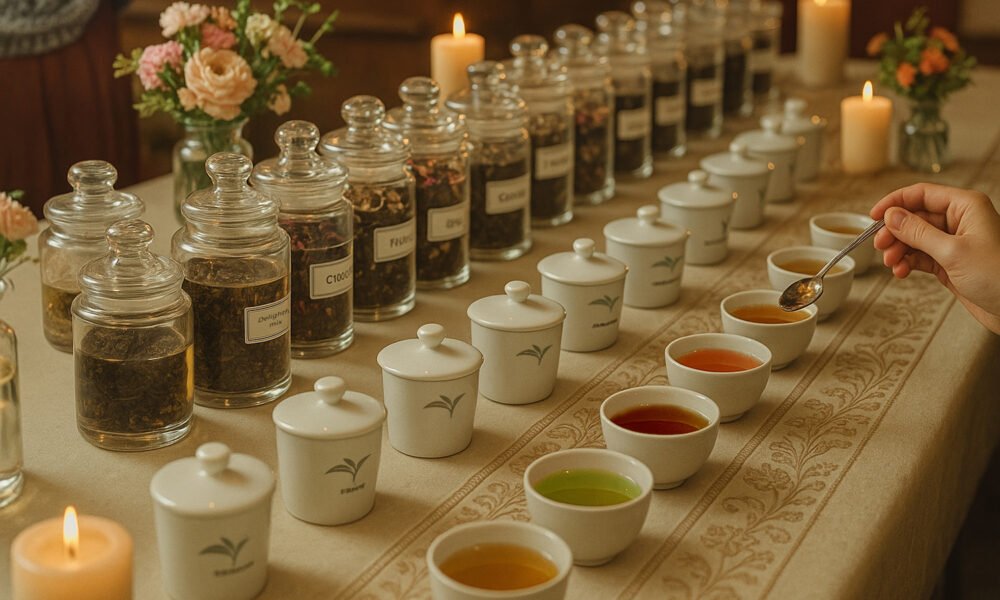
Master the Art of Tea Sensory Training: Your Path to Professional Tea Evaluation
Index
Index
Professional tea evaluation requires training your senses to detect subtle flavors and aromas.
Tea sensory training builds the skills needed to judge tea quality with confidence and precision. This article will guide you through proven techniques to develop your palate from beginner to expert.
Key Takeaways
- Regular tea tasting with multiple varieties builds your sensory memory and helps you detect subtle flavor differences between teas.
- Comparative tasting (sampling 5-10 teas side by side) trains your brain to notice nuances in flavor, aroma, and texture that you might miss when tasting in isolation.
- Consistent brewing methods are essential for accurate evaluation – use standard measurements (2-3 grams per 8 ounces), proper water temperatures (175°F / 80 °C for green teas, 205°F / 96 °C for black teas), and white porcelain cups.
- The “slurping” technique sprays tea across all taste receptors while drawing air through your retronasal passage, enhancing your ability to detect complex flavors.
- Professional evaluators assess tea at multiple stages – examining dry leaf aromas, wet leaf scents after steeping, and tracking how flavors evolve as the tea cools.
Foundational Techniques for Palate Development
Building your tea tasting skills starts with solid basics that train your senses. These key methods will sharpen how you detect flavors and help you track your progress as you grow from beginner to expert tea evaluator.
The Importance of Tasting Widely and Frequently
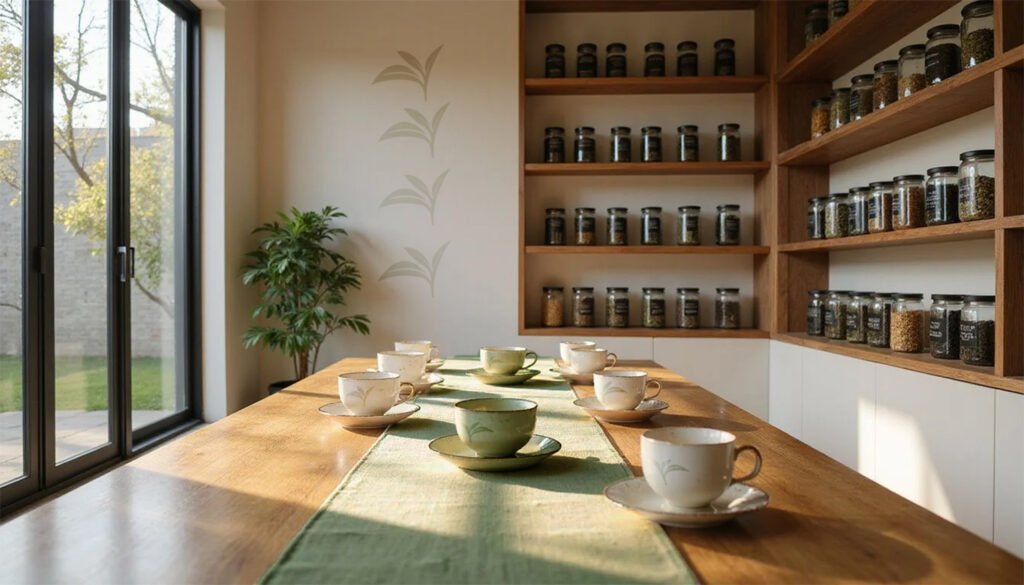
Regular tea tasting forms the backbone of sensory development. Tea professionals sample dozens of varieties weekly to train their palates to detect subtle flavor differences. This practice builds a mental catalog of tastes and aromas that becomes second nature over time.
You’ll notice your ability to identify specific notes improves with each tasting session, whether you’re examining black tea, yellow tea, or oolong varieties.
Exposure to diverse teas sharpens your perception skills and expands your sensory vocabulary. Try comparing teas from different regions, processing methods, and harvest seasons to understand how these factors affect flavor profiles.
Many tea companies and specialty academies offer cupping sessions where you can taste multiple samples side-by-side. This comparative approach helps you recognize nuances in mouthfeel, astringency, and aroma that might otherwise go unnoticed in isolated tastings.
Comparative Tasting: Sharpening Your Perception
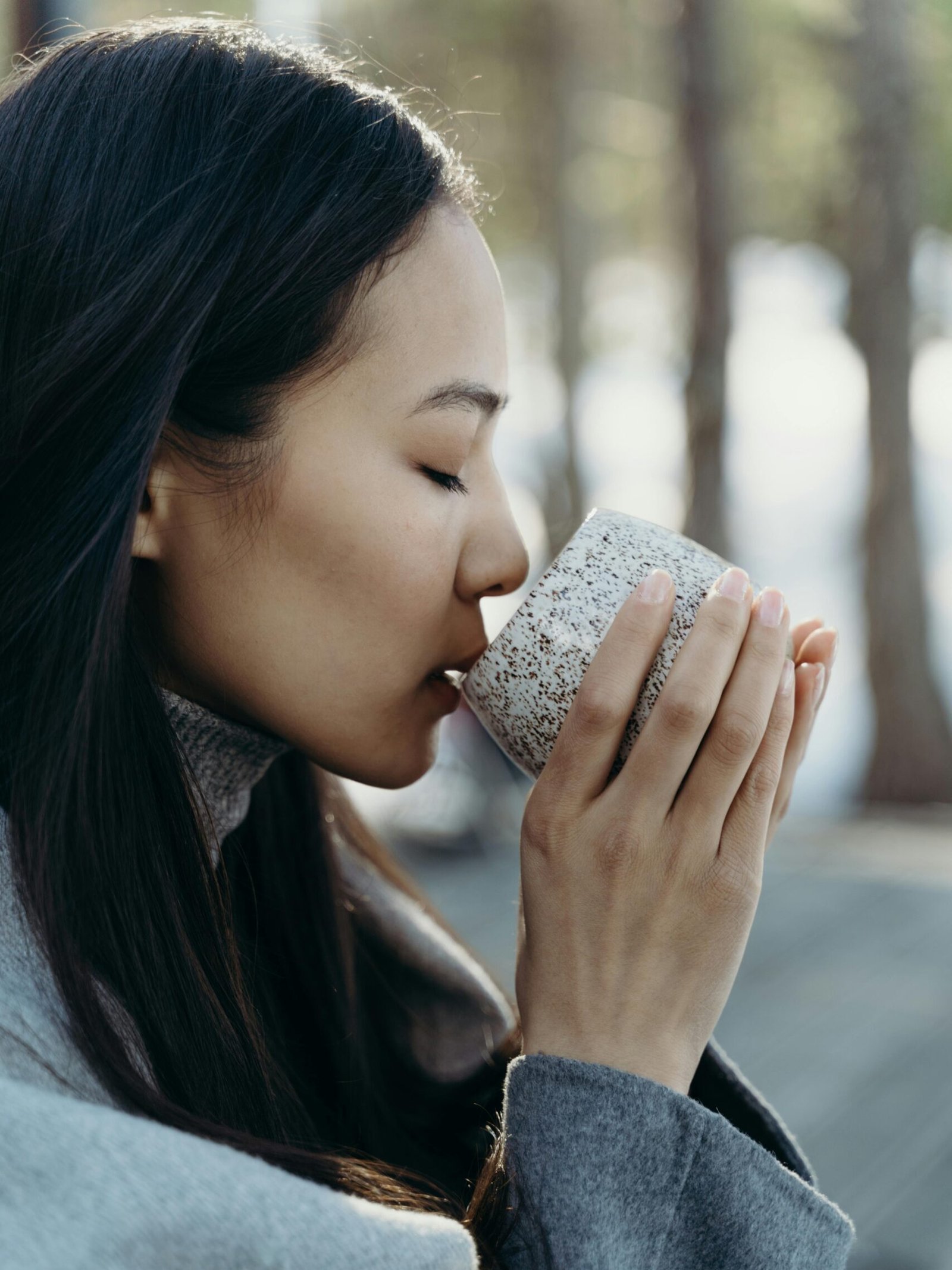
Comparative tasting stands as a cornerstone technique for serious tea evaluators. You must taste multiple teas side by side to notice subtle differences that might escape your attention in isolation.
This practice trains your palate to detect nuances in flavor, aroma, and texture across different tea varieties. Set up tastings with teas that share similar characteristics but differ in one aspect—perhaps region, processing method, or harvest season.
Your brain will naturally highlight the contrasts, making each tea’s unique profile more distinct and memorable.
Tea sensory evaluation becomes more precise through structured comparison exercises. Try brewing the same tea at different temperatures or steeping times to understand how these factors affect the final cup.
Professional tea tasters often sample 5-10 variations in a single session, taking detailed notes on each sample’s appearance, aroma evolution, and mouthfeel characteristics. This methodical approach builds your internal “sensory rolodex” and sharpens your ability to identify quality markers.
Many tea academies teach this technique as essential for anyone seeking certification or working in quality control within the tea industry.
The Critical Role of Meticulous Note-Taking
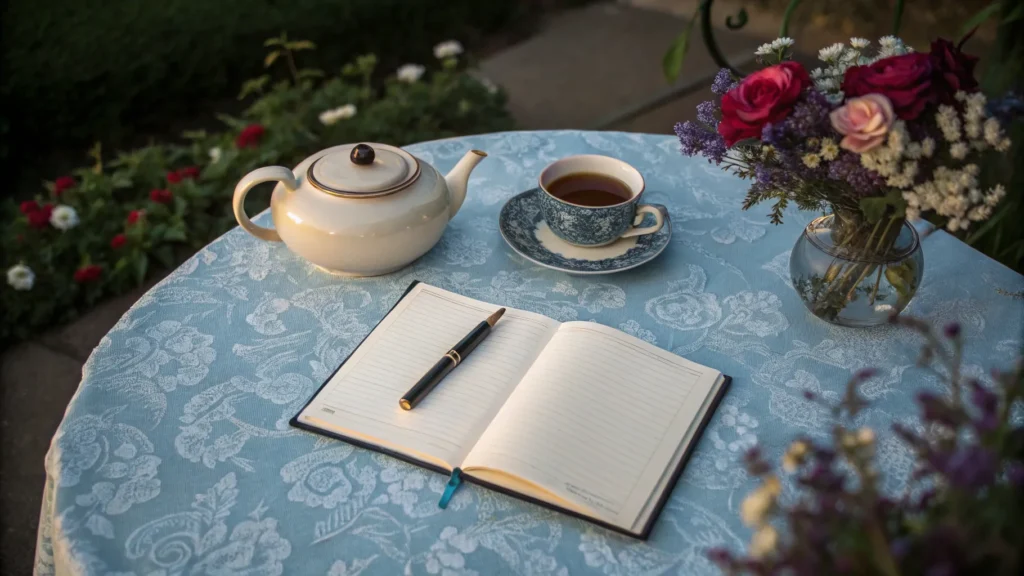
Taking detailed notes transforms your tea tasting from casual sipping to serious study. Your tea journal serves as both progress tracker and flavor archive, helping you spot subtle differences between varieties.
Write down everything—from first impressions to lingering aftertastes. Document how processing methods affect flavor profiles and record your observations about aroma, body, and mouthfeel during each tasting session.
Tea notes become more valuable over time as your sensory skills grow. Many professional tea evaluators review their early notes to see how their palate has developed. This practice builds your tea taster’s vocabulary and enhances your ability to analyze complex flavors.
Regular documentation also helps you establish consistent criteria for grading teas across the six major categories, making your evaluations more reliable and precise.
Isolating Senses and Consistent Brewing Practices
Tea sensory training demands focus on each sense separately to build true evaluation skills. Mastering consistent brewing methods creates a foundation for accurate flavor assessment in professional tea evaluation.
Sensory Training Fundamentals
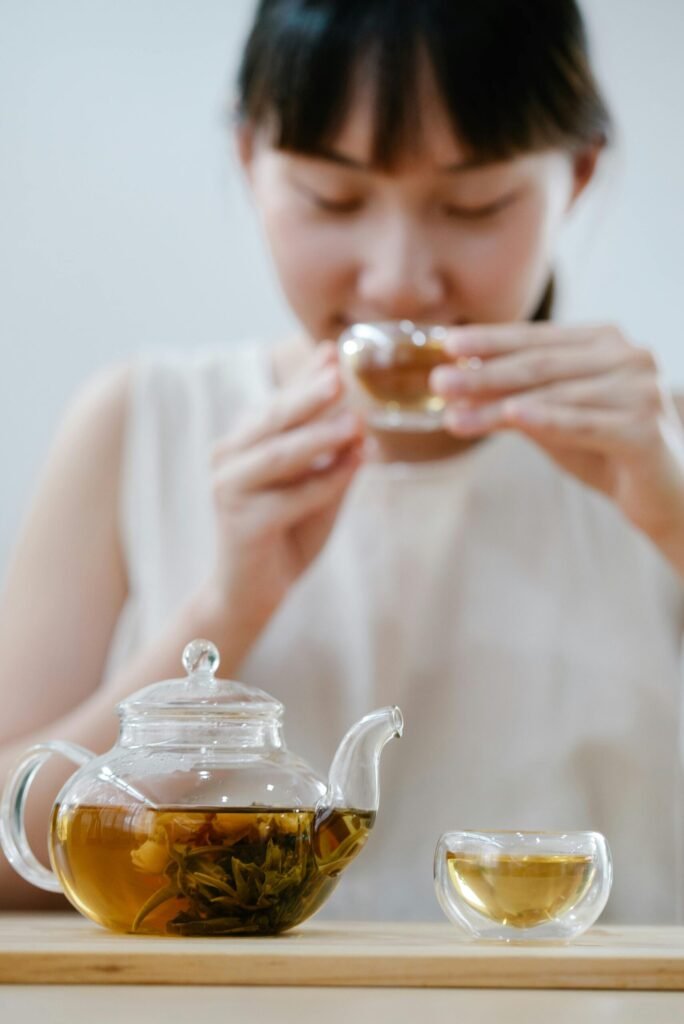
Developing Your Senses
- Smell training begins with closing your eyes while sniffing dry tea leaves to identify specific aromas without visual distractions
- Visual assessment requires good lighting to examine leaf quality, color variations, and uniformity before brewing begins
- Taste isolation happens through small sips focused on specific areas of your tongue to detect sweet, sour, bitter, salty, and umami notes
Precise Brewing Parameters
Temperature and Timing Control
- Water temperature control directly impacts flavor extraction, with green teas needing cooler water (175°F / 80 °C) and black teas requiring hotter water (205°F / 96 °C)
- Steeping time must remain consistent between tastings, typically 3-5 minutes for most teas, to create reliable comparison points
- Tea-to-water ratios should follow standard measurements of 2-3 grams per 8 ounces for accurate sensory evaluation
Essential Equipment Setup
Creating Optimal Tasting Conditions
- Tasting cups made of white porcelain help eliminate variables that colored cups might introduce to your perception
- Palate cleansing between tastings with room temperature water prevents flavor carryover that could skew your evaluation
Building Expertise Through Practice
Documentation and Learning Tools
- Journal tracking creates a record of how brewing changes affect flavor profiles across multiple tastings
- Sensory memory builds through repeated exposure to specific tea types under identical brewing conditions
- Flavor wheels serve as valuable tools for naming and categorizing the sensations you detect during isolated tasting sessions
- Professional evaluators often taste the same tea multiple times with slight brewing variations to understand its full character
The next crucial step in your tea sensory journey involves cultivating mindful tasting practices that build your internal flavor library.
Cultivating Mindful Tasting and Sensory Memory
Mindful tasting builds your tea memory bank through focused practice with all five senses, helping you spot subtle notes that casual drinkers miss – learn how to track flavor changes across time and temperature in our full guide to sensory training.
Engaging All Senses in the Tasting Process
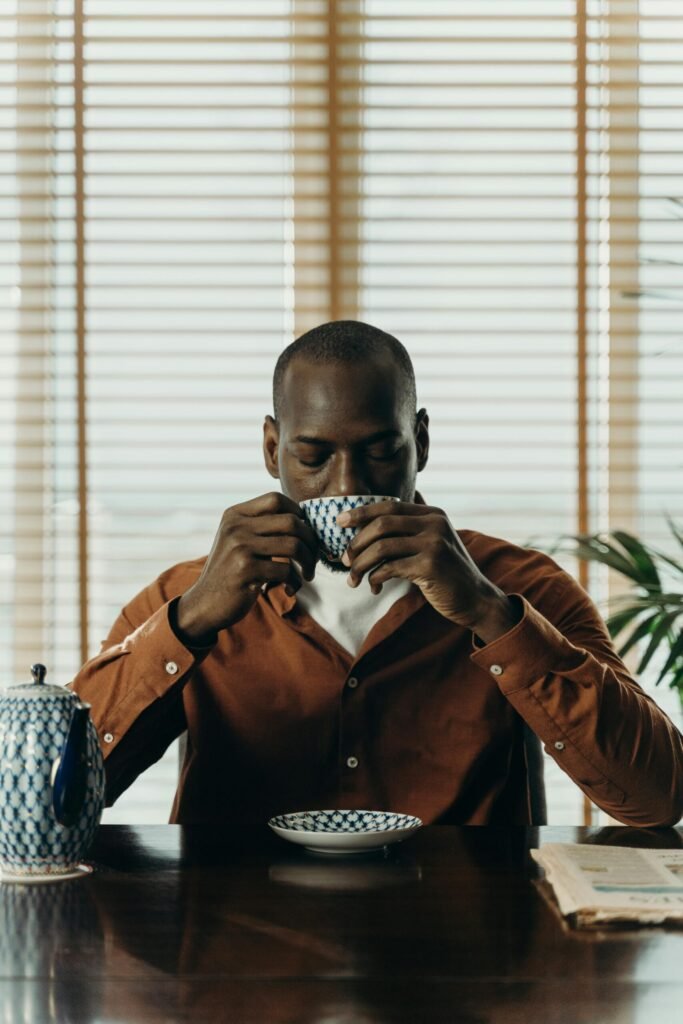
True tea sensory evaluation demands more than just your taste buds. Your eyes notice the tea’s color and clarity, while your nose picks up delicate aromas that shape flavor perception.
Touch matters too—feel the weight of the liquor on your tongue and notice how it coats your mouth. Even sound plays a role as you listen to the gentle splash of pouring or the distinctive slurp that aerates the tea across your palate.
Each sense provides vital clues about quality, processing methods, and terroir influences.
Professional tasters develop this multi-sensory approach through regular practice. Try tasting with your eyes closed to heighten aroma perception, or focus solely on mouthfeel for several sips.
These targeted exercises build a comprehensive “sensory rolodex” that improves your evaluation skills. Tea wheels and flavor charts serve as helpful tools during this process, giving you vocabulary to describe what you experience.
The most skilled evaluators can identify tea origin, processing techniques, and quality grade by engaging all senses in this structured yet intuitive process.
Building Your Internal “Sensory Rolodex”
Beyond engaging your senses, you must build a mental catalog of tea experiences. This “sensory rolodex” serves as your reference library for future tastings. Each time you sample a tea, file away its unique profile—the floral notes of a high-mountain oolong or the malty depth of an Assam black.
Tea experts develop this skill through consistent practice, comparing new samples against known standards. Your brain needs repeated exposure to recognize specific cultivars and origins with accuracy.
Professional tea sensory evaluation relies on this mental database. Start by tasting benchmark teas from each category, noting their distinctive characteristics. Create memory anchors by linking tea qualities to familiar foods or experiences.
For example, connect the grassiness in sencha to fresh-cut lawn or compare a Darjeeling’s muscatel quality to specific grapes. This mental filing system grows more refined with each tasting session, allowing you to identify subtle differences between similar teas and track your palate development.
Using Flavor Wheels and Maintaining Palate Clarity
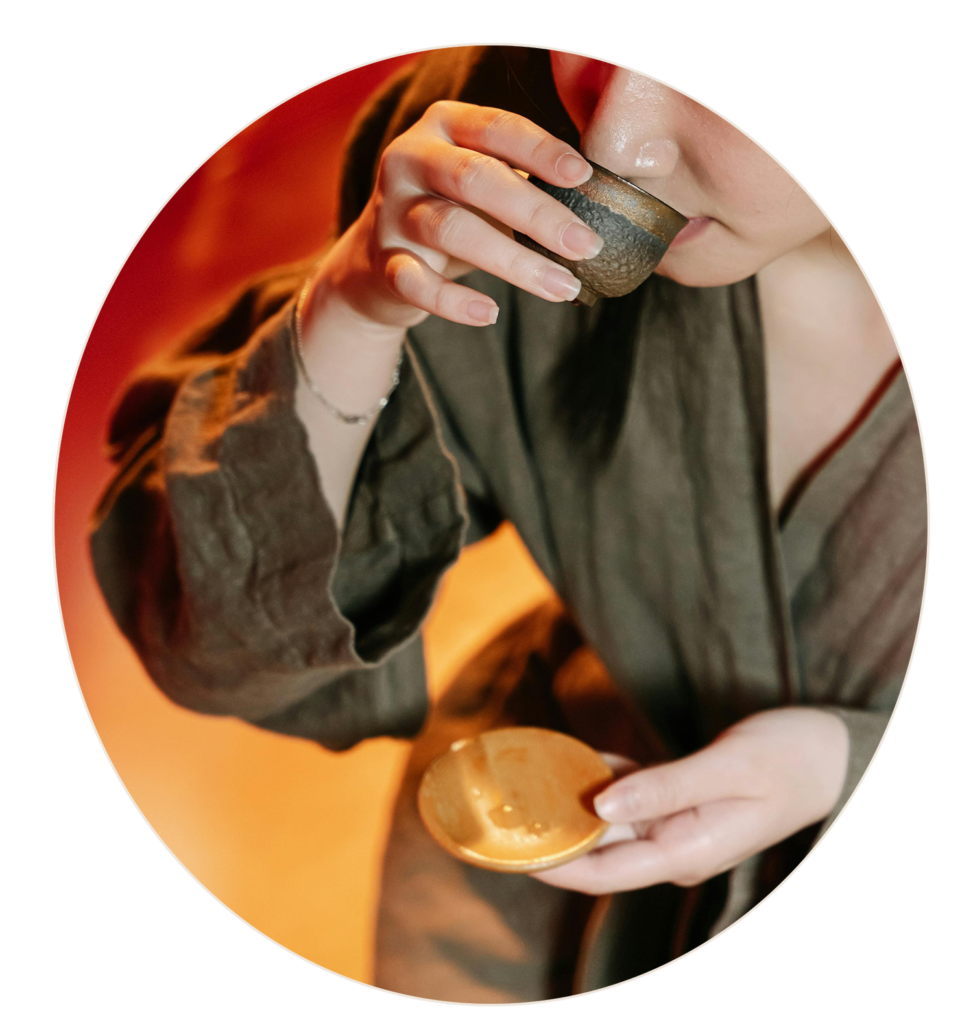
Flavor wheels serve as vital tools for tea sensory evaluation, helping you map and identify complex taste profiles. These visual guides break down flavors into categories like floral, fruity, or earthy, making it easier to put words to what you taste.
Studies show that flavor wheels enhance consumer understanding of specialty teas and support the authentication process. Tea academies worldwide use these charts to develop a systematic sensory lexicon, which proves especially helpful for younger tea enthusiasts still building their tasting vocabulary.
Your palate needs regular maintenance to stay sharp during professional tea evaluation. Drink plenty of water between tastings to rinse away lingering flavors. Avoid strong foods, cigarettes, and perfumes before important tastings as these can dull your senses.
Many tea sommeliers practice palate reset techniques such as sniffing coffee beans or eating a plain cracker to clear previous taste impressions. This clarity allows you to judge each tea sample fairly, without the influence of previous flavors affecting your scoring criteria.
Mastering Aroma Recognition
Aroma recognition forms the backbone of expert tea evaluation and sets apart casual drinkers from true professionals. Your nose will detect subtle notes that your taste buds miss, making aroma training a critical skill for anyone serious about tea assessment.
Exploring Aromas: From Dry Leaf to Cooled Liquor
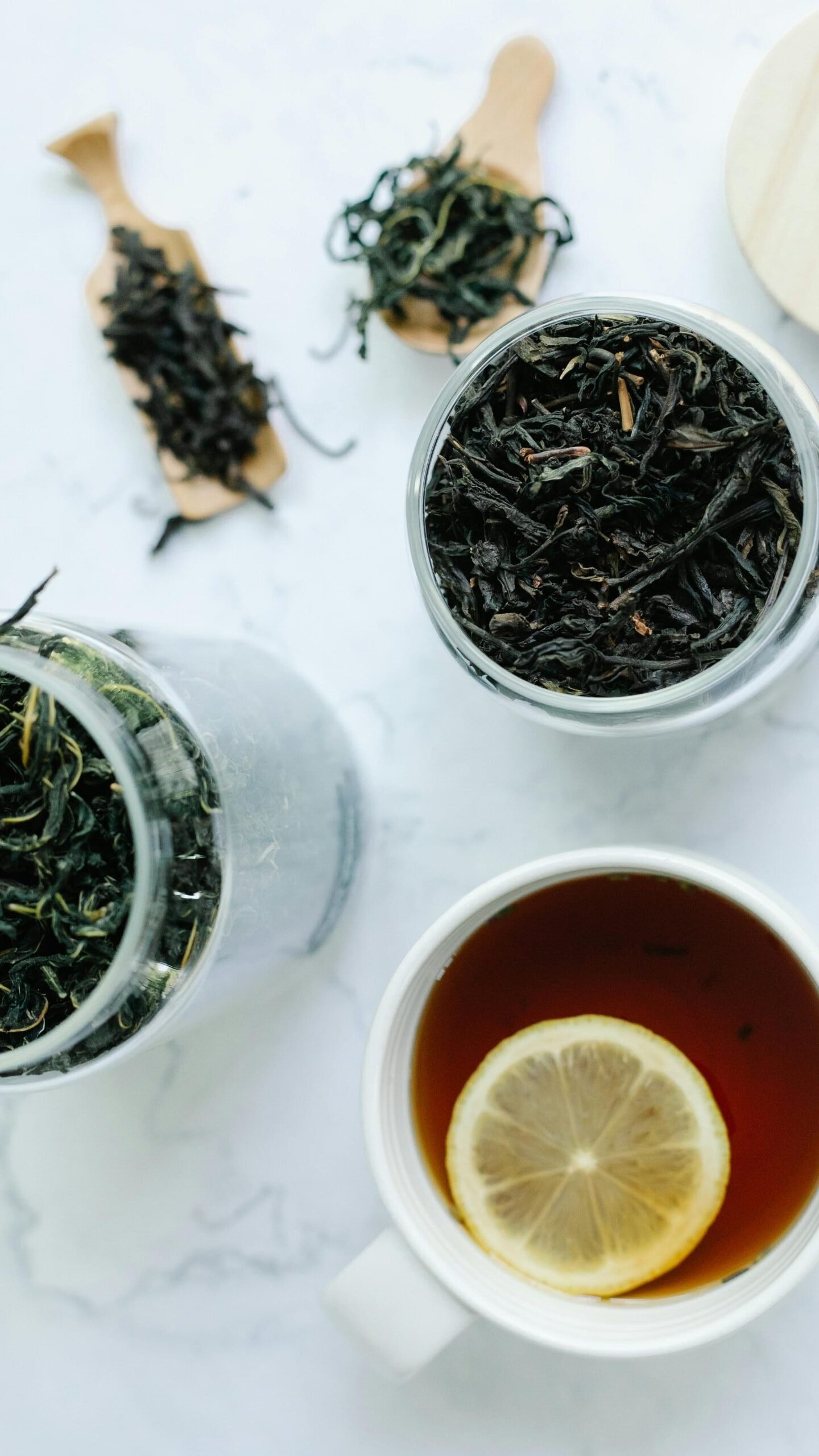
Tea aroma evaluation forms the backbone of professional sensory training. Mastering this skill requires both practice and a structured approach to detect the subtle notes that reveal a tea’s quality and character.
Initial Leaf Assessment
Dry Leaf Evaluation
- Start with dry leaf assessment by cupping your hands around the leaves and taking short, quick sniffs to capture the initial aroma profile
- Notice how quality teas often display uniform color and clean, distinct aromas that hint at their processing method and origin
- Pay attention to aroma intensity, which can indicate both quality and freshness in specialty teas
Brewing Setup and Techniques
Optimal Preparation Methods
- Heat your teaware before brewing to create the ideal environment for aroma development during the evaluation process
- Use a gaiwan or professional cupping set to maintain consistency across different tea samples during your evaluation
Progressive Aroma Analysis
Tracking Scent Evolution
- Smell the wet leaves after the first infusion to detect new aromas that emerge once the leaves have expanded and released their essential oils
- Observe how the liquor aroma changes from the moment of pouring to several minutes later as volatile compounds interact with the air
- Allow the tea to cool slightly before taking another series of sniffs to detect how temperature affects aroma expression
- Track aroma evolution through multiple infusions to understand how the flavor profile develops over time
Developing Your Sensory Skills
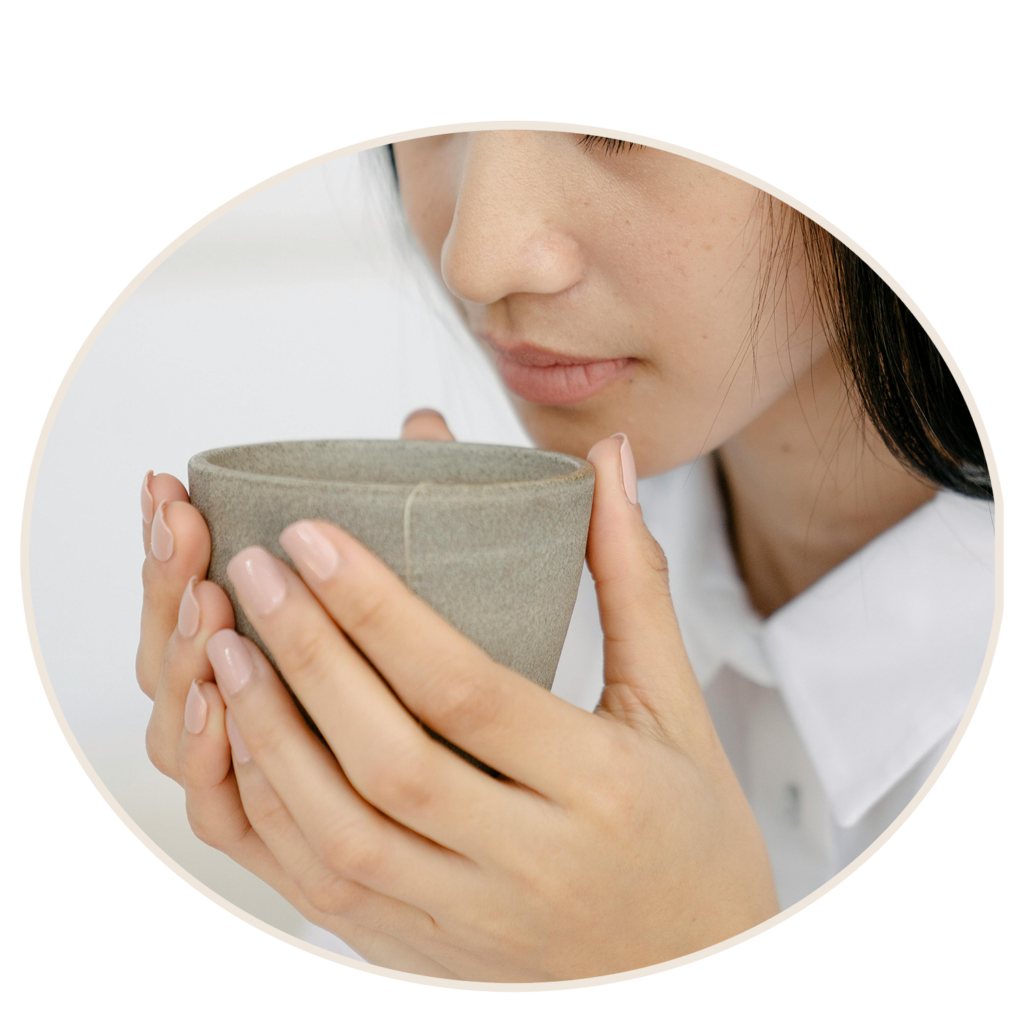
Building Aroma Recognition
- Train your nose to identify specific aroma categories such as floral, fruity, woody, or vegetal notes found in various tea types
- Build your sensory memory by connecting tea aromas to familiar scents from your daily life like fresh-cut grass or baked apples
- Practice describing aromas with specific terminology rather than vague terms to develop your tea taster’s vocabulary
- Compare similar teas side by side to sharpen your ability to detect subtle aroma differences between samples
Documentation and Learning Tools
Recording Your Progress
- Record your findings in a dedicated notebook using consistent scoring criteria for each aroma attribute you evaluate
- Study flavor wheels as visual guides to help identify and name the complex aromas you detect during evaluation
Understanding Aroma Evolution and Structured Assessment
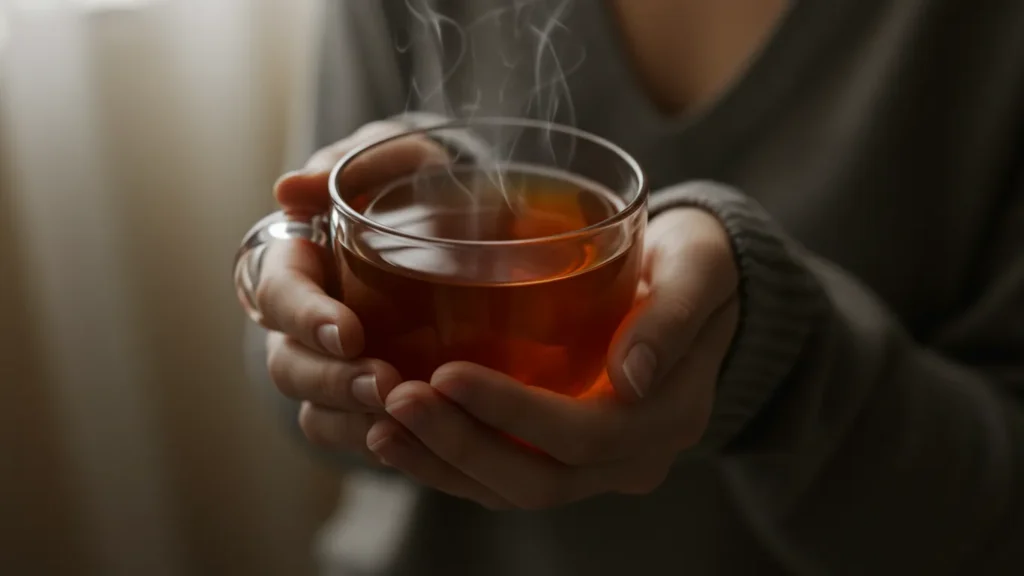
Tea aromas change dramatically throughout the tasting process. You’ll notice distinct scent profiles from the dry leaf, then during steeping, and finally in the cooled liquor. Professional evaluators track these changes using structured methods like aroma wheels, which map scents from floral and fruity to woody and mineral.
This evolution reveals much about tea quality and processing methods.
Structured assessment demands focus on each stage of the aroma journey. Most experts start with the dry leaf scent, move to the wet leaf after infusion, then assess the steam, and finally evaluate the brewed tea’s aroma.
This step-by-step approach helps build your “sensory rolodex” of tea memories. Tea flavor wheels serve as valuable tools during this process, helping you identify and name specific scent compounds that might otherwise remain elusive.
Practical Exercises for Identifying Tea Aromas
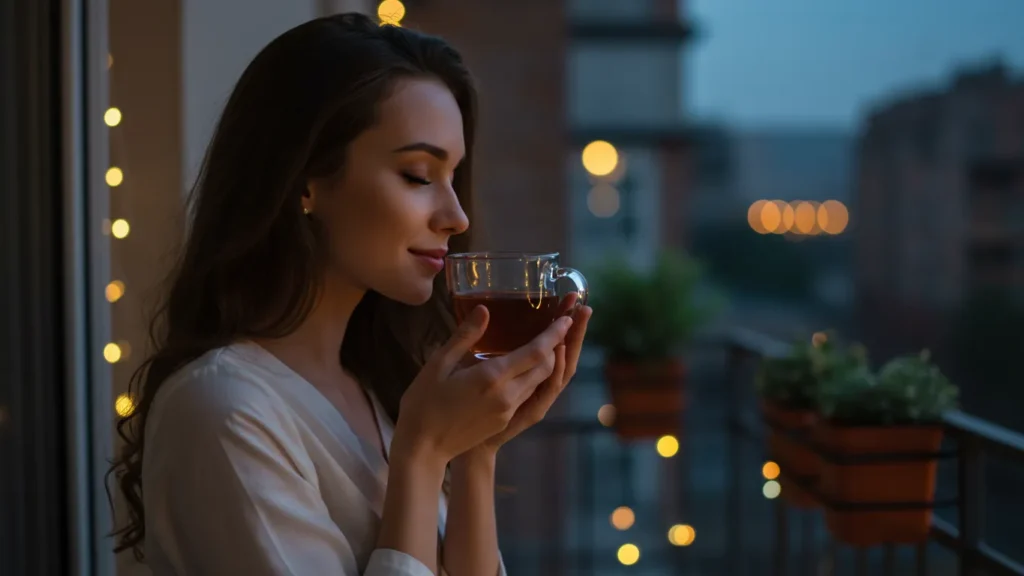
Now that you understand how aromas evolve throughout the tea tasting process, let’s explore practical ways to sharpen your aroma recognition skills. These exercises will help you build a strong foundation for professional tea evaluation through consistent practice and sensory development.
Building Your Aroma Training Tools
Creating Reference Materials
- Create an aroma kit with small jars containing common tea scent references like dried flowers, spices, fruits, and herbs that match notes found in various tea types
- Practice identifying specific aroma notes in isolation before attempting to detect them in complex tea blends
- Use a standard tea flavor wheel during practice sessions to expand your descriptive vocabulary and connect what you smell to established terminology
Structured Practice Techniques
Developing Detection Skills
- Practice blind aroma identification by having someone prepare unlabeled samples of different tea types, then write down what you detect before comparing notes
- Try the “three-sniff technique” where you smell wet leaves at 30-second intervals to track how aromas change as the leaves cool
- Alternate between smelling the tea and neutral substances like plain water to prevent sensory fatigue during extended evaluation sessions
Comparative Evaluation Methods
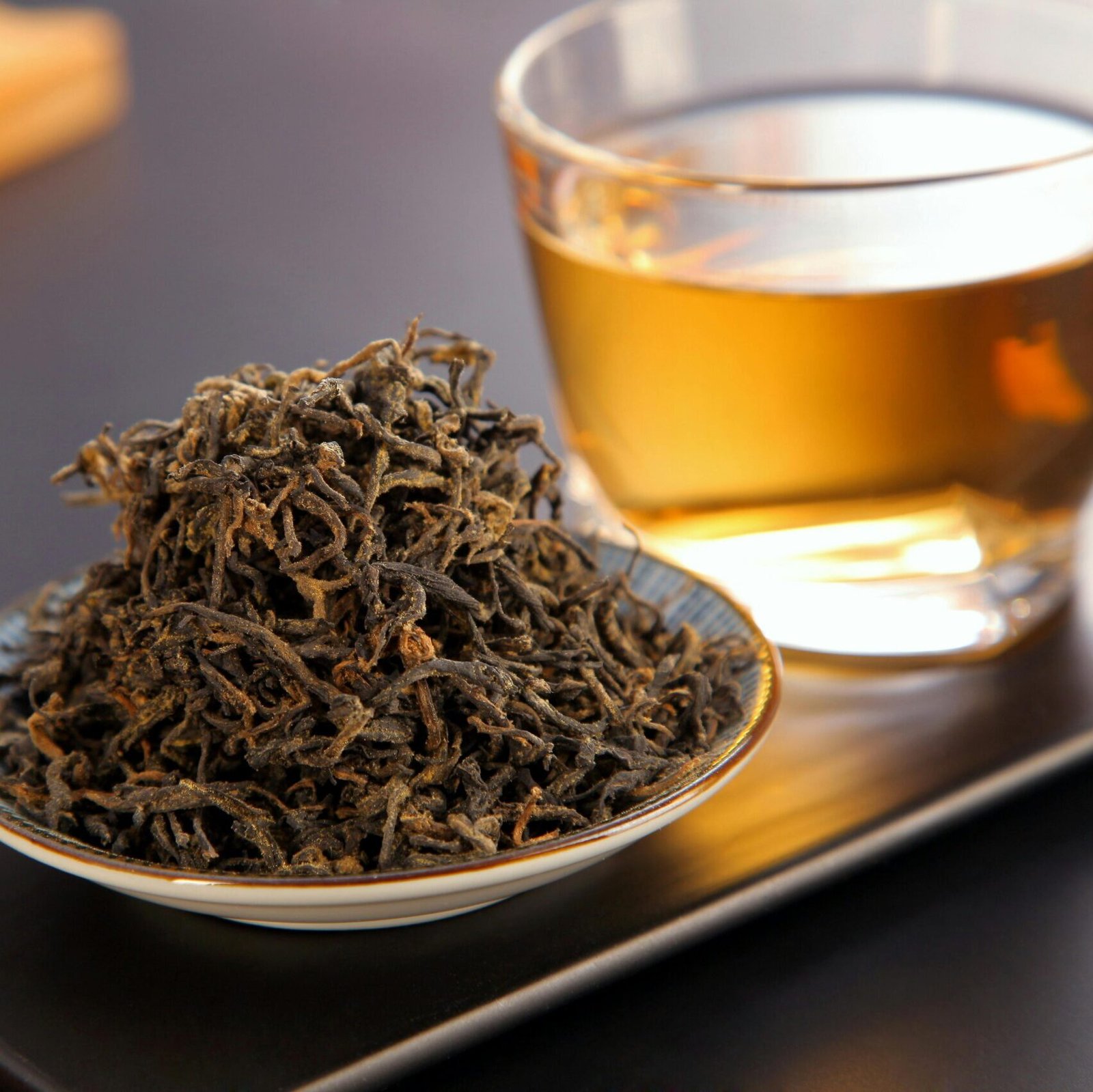
Advanced Comparison Exercises
- Compare dry leaf aromas from the same tea type but different origins to train your nose to detect subtle regional differences in scent profiles
- Set up comparative tastings with green teas from China and Japan to identify the distinct grassy, marine, and vegetal notes unique to each tradition
- Conduct vertical tastings of the same tea harvested across different seasons to notice how climate affects aroma development
Documentation and Community Learning
Tracking Your Progress
- Record your aroma observations in a dedicated notebook, noting specific scents and their intensity at each stage of evaluation
- Develop your “sensory memory” by regularly revisiting familiar teas and confirming whether your aroma perceptions remain consistent over time
- Join group tastings where participants share their aroma perceptions, which helps validate your findings and exposes you to different perspectives
Decoding Flavor and Mouthfeel
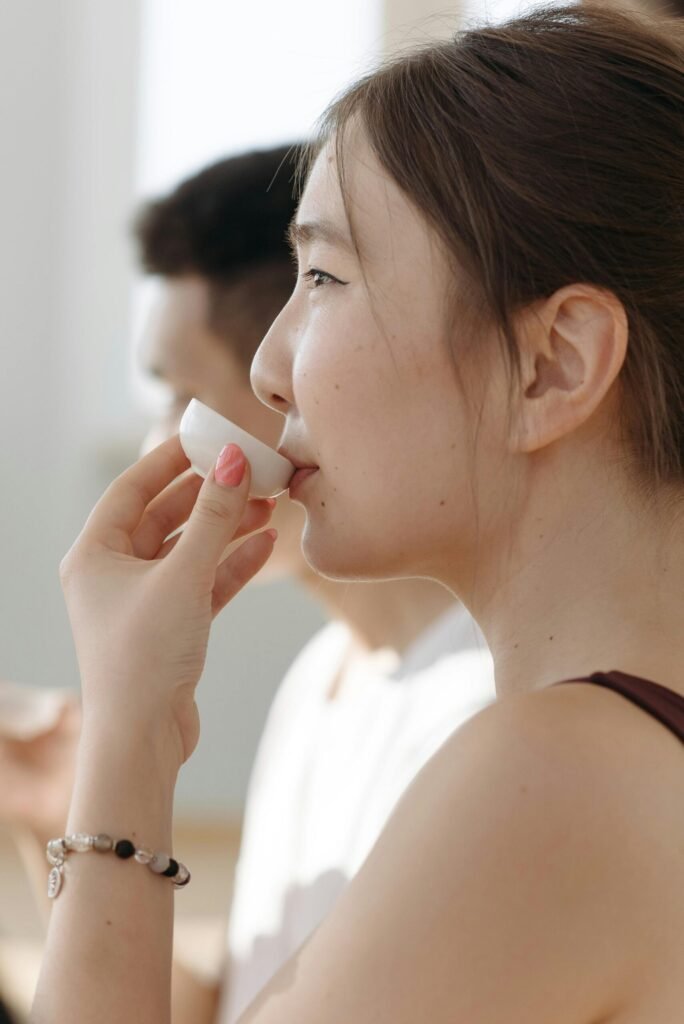
Decoding flavor and mouthfeel marks the pinnacle of tea sensory evaluation, where your palate becomes a precision instrument. This section guides you through specific tasting techniques that reveal a tea’s true character, from basic tastes to complex texture profiles.
The Art and Science of Slurping
Slurping tea might seem impolite at dinner tables, but it serves a crucial purpose in professional tea evaluation. This technique sprays the liquid across your entire palate, hitting all taste receptors while simultaneously drawing air through your retronasal passage.
Tea experts use brief, controlled slurps to enhance flavor detection and identify subtle notes that might otherwise go unnoticed. The sound itself isn’t important—it’s the even distribution of tea across your taste buds that matters.
You’ll notice an immediate difference in how many flavor compounds you can detect compared to regular sipping.
The proper slurping method requires practice but pays off in your sensory development. Hold a small amount of tea in your mouth, then draw it in with a quick intake of air. Pay attention to where you feel different sensations—sweetness at the tip, bitterness at the back, and umami on the sides of your tongue.
Professional tea evaluators develop this skill through regular practice until it becomes second nature. This technique forms just one part of a complete sensory approach that also includes analyzing the tea’s body, texture, and astringency levels.
Next, we’ll explore how to assess these textural elements that create the full mouthfeel experience.
Identifying Primary Tastes, Complex Flavors, and Their Evolution
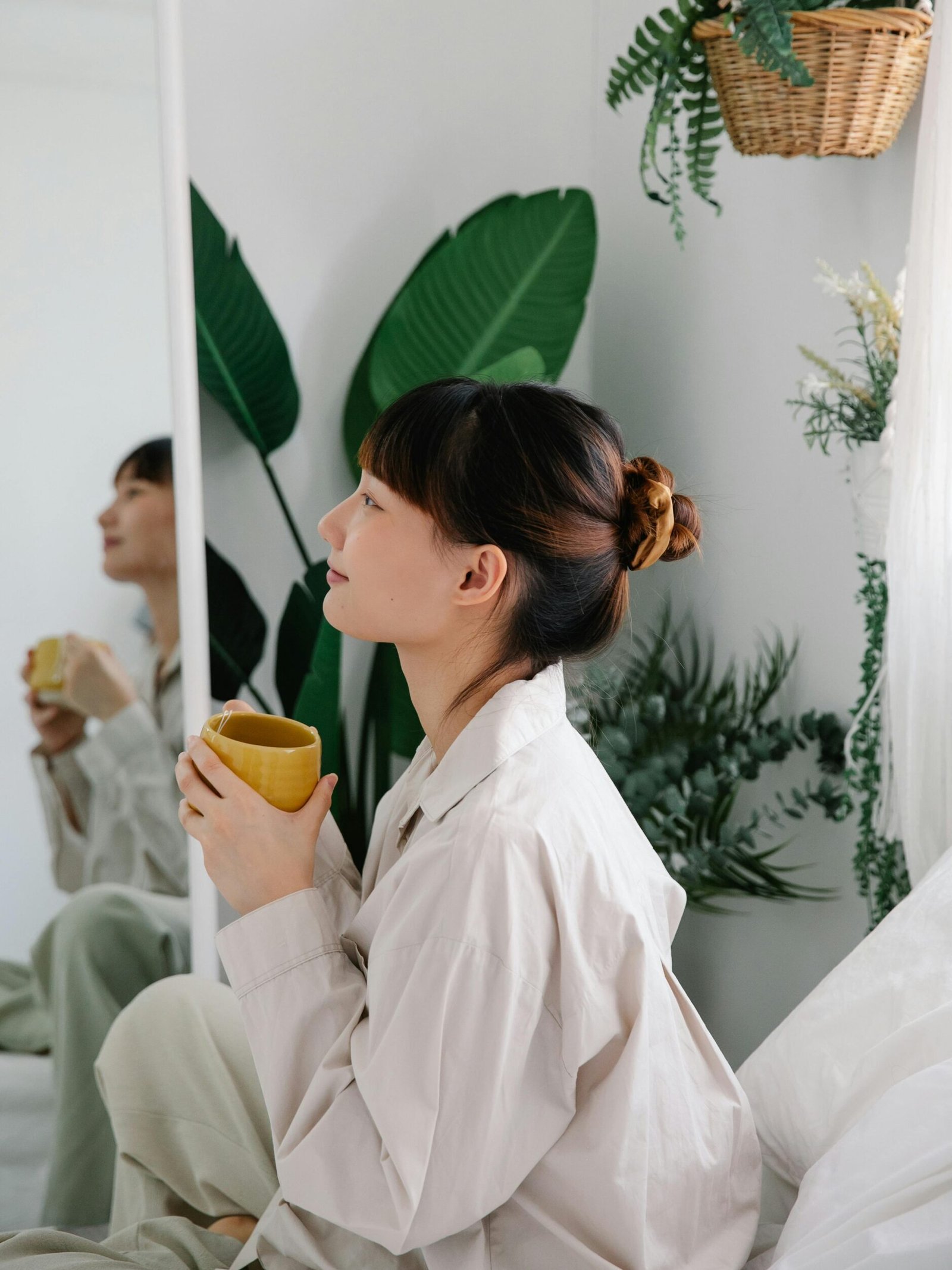
Proper slurping technique leads directly to taste identification. Tea offers five primary tastes: sweet, sour, bitter, astringent, and umami. Each tea type presents these tastes in different degrees based on its composition and processing.
You’ll notice flavors shift as your tea cools – what starts as bright and grassy might develop fruity or nutty notes minutes later. This evolution reveals the tea’s quality and complexity.
Professional tea evaluators track these flavor changes through multiple sips. The first sip might highlight sweetness, while later tastes bring out deeper notes like chocolate, malt, or floral hints.
Tea sensory training teaches you to map this flavor journey using standard evaluation criteria. Your taste buds will grow sharper with practice, allowing you to identify subtle differences between similar teas.
Many global tea academies offer courses specifically on flavor recognition to build this essential skill.
Assessing Tea Body, Texture, and Astringency
Tea body refers to the weight and fullness you feel in your mouth. Light-bodied teas feel thin like water, while full-bodied teas create a heavy, rich sensation. Texture adds another dimension to this experience, revealing itself as creaminess, smoothness, or roughness on your tongue.
Professional tea evaluators pay close attention to astringency—that dry, puckering feeling that quality teas display in balanced amounts. This physical sensation differs from bitterness (a taste) and plays a key role in standard tea sensory evaluation.
Body and texture evaluation requires practice with many tea varieties. You’ll need to develop your sensory memory to compare different samples effectively. Try tasting teas side by side to notice how some feel thick and creamy while others seem watery or sharp.
The complexity of these sensations often evolves throughout your sipping experience, with high-quality teas offering layers of changing mouthfeel. Next, we’ll explore how to evaluate the lasting impression teas leave behind.
Evaluating the Aftertaste: The Lingering Impression
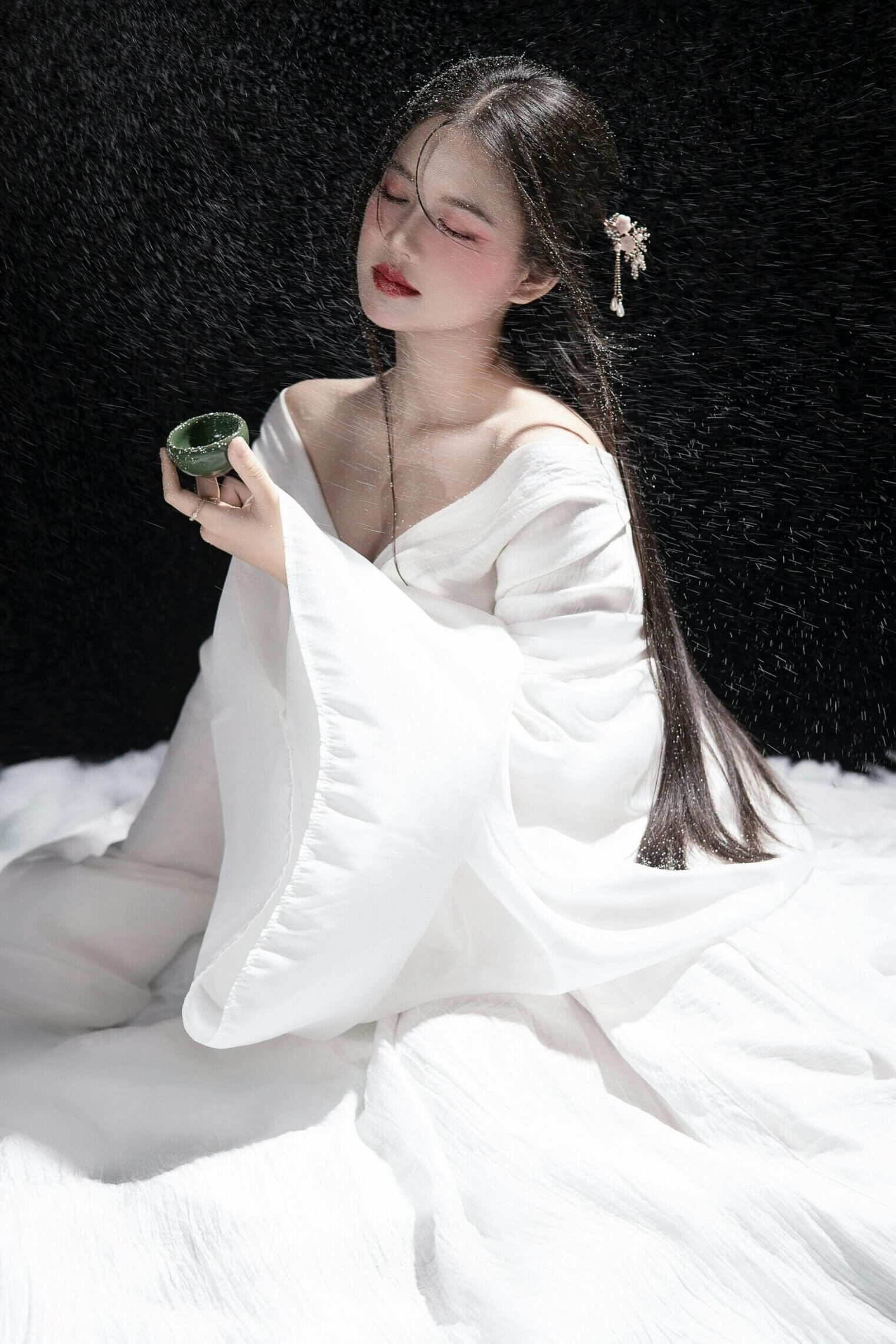
Aftertaste serves as a key marker of tea quality and complexity. Expert sensory evaluators pay close attention to this lingering sensation that remains after swallowing. High-quality teas deliver notable aftertastes that endure, revealing layers of flavor that evolve over time.
You can track these changes by noting how the taste transforms from initial sip to final impression. This evaluation adds depth to your understanding of the tea’s complete profile and helps distinguish exceptional teas from average ones.
The impression left behind varies based on several factors including tea type and brewing method. Premium teas maintain their flavor profiles across multiple infusions, showing remarkable staying power.
This persistence indicates excellent craftsmanship and superior leaf quality. We suggest focusing on how pleasant sensations linger on different parts of your palate. Does sweetness remain on the tip of your tongue? Do woody notes echo at the back of your throat? Mastering aftertaste assessment brings you closer to professional-level sensory evaluation skills.
Next, we’ll explore how to combine all these sensory elements into a comprehensive evaluation framework.
Conclusion
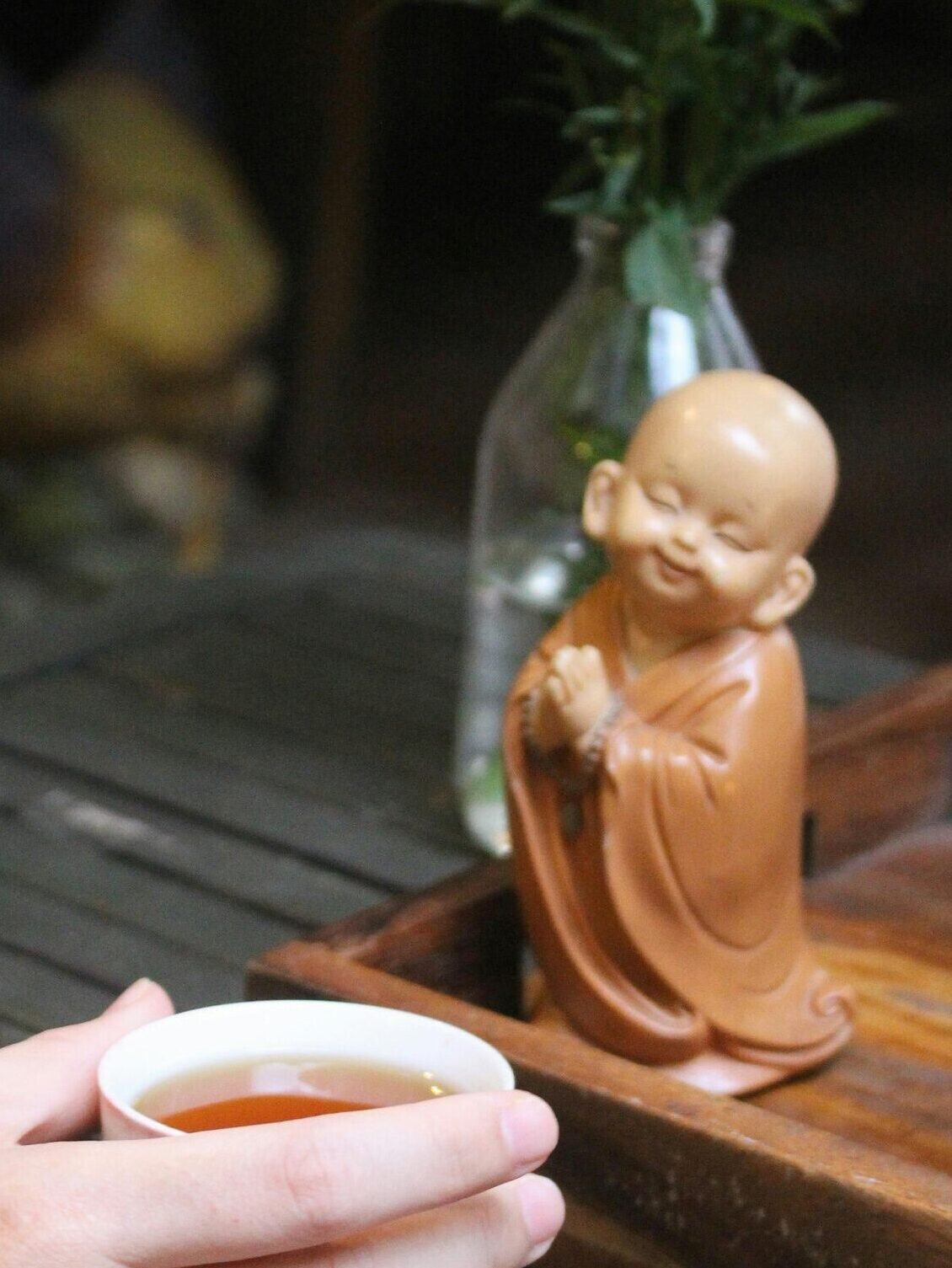
Your journey to tea mastery demands practice, patience, and passion. Daily tasting builds skills faster than any book can teach. Keep detailed notes of each cup to track your progress and train your memory.
Flavor wheels serve as guides while you build mental maps of tastes and scents. Professional evaluation combines science with art—requiring both technical skill and personal insight.
Start today with simple comparisons between teas, and watch as your senses transform ordinary leaves into extraordinary experiences.
FAQs
1. What is tea sensory evaluation professional training?
Tea sensory evaluation professional training teaches you how to judge tea quality using your sense of taste and smell. This training follows the China National Standard for tea sensory evaluation. You’ll learn the tea taster’s vocabulary and how to score teas across all six tea categories.
2. How can I become a tea sensory professional?
You need to complete a certification program that covers both the quantity and quality aspects of tea evaluation. Many academies offer workshops focused on tea sensory development. The training builds your knowledge of tea botany, variety, and the specific criteria used in professional tea-tasting.
3. What will I learn in a tea sensory training course?
The course teaches you how to evaluate tea according to the scoring criteria of the six tea categories. You’ll develop your ability to identify odor, taste, and visual qualities in tea. Most programs also include tastings of various products such as chocolate to help you adapt your palate.
4. Do I need prior tea education before taking sensory training?
Basic tea knowledge helps but isn’t always required. Many programs start with Tea 101 fundamentals before advancing to sensory analysis. Your interest and willingness to learn matter more than prior experience.
5. What errors should we be aware of when conducting tea sensory evaluation?
Common errors include personal bias, improper brewing techniques, and environmental distractions. Training teaches you to recognize and avoid these mistakes. You’ll learn to maintain consistency in your evaluation process for accurate results.
6. Will I receive a certificate after completing the training?
Yes, most professional tea sensory programs award a certificate upon successful completion. This certificate validates your ability to conduct sensory analysis according to national standards. It can provide valuable insight and credentials for careers in the world tea industry.
References
- https://tearebellion.com/blogs/blog/master-the-art-of-tea-tasting-and-expand-your-tea-palate?srsltid=AfmBOoqQRIC8nPwb6_nxZmh2ViNHCmGnOebaCVMh8N2AQqBrQwL8GqsL
- https://tearebellion.com/blogs/blog/master-the-art-of-tea-tasting-and-expand-your-tea-palate?srsltid=AfmBOor0YnmAEhT7bSIB3lbgsunVnrb04as9A6iTfFmMTJ7o2dH11SQI (2025-01-15)
- https://www.teasetbox.com/complete-guide-to-tea-tasting-mastery/?srsltid=AfmBOorJcReHn1QS-gt5rCGwETj4TFCFftZgmVf6BPOK56r3al2zVtSY
- https://tearebellion.com/blogs/blog/master-the-art-of-tea-tasting-and-expand-your-tea-palate?srsltid=AfmBOopGjxoc5LX2rna20f_rUacfS7RJVpaetpbBULDtG9O-BCcopgey
- https://tearebellion.com/blogs/blog/master-the-art-of-tea-tasting-and-expand-your-tea-palate?srsltid=AfmBOooGHPsQbaDDzilW0XmLAfsDNgOTMYgYuvnUjXgoqk90oK7WmXD0 (2025-01-15)
- https://tearebellion.com/blogs/blog/master-the-art-of-tea-tasting-and-expand-your-tea-palate?srsltid=AfmBOoqBnGPb4fOniVB71XTGmkr6PmsGLtDuioQMACgYce-WGBmIw6RB
- https://www.linkedin.com/pulse/art-tea-tasting-sensory-journey-hiba-haneefa-lrfzc
- https://pmc.ncbi.nlm.nih.gov/articles/PMC8070119/
- https://www.spiritualityhealth.com/articles/2016/06/13/sensory-experience-tasting-tea?srsltid=AfmBOoo3-KPF6lSLi9mXifJMJJAuqXScccn4FLa4FGOlQEPyUz3BUdAj (2016-06-13)
- https://jyyna.co.uk/tea-taste/
- https://www.teasetbox.com/complete-guide-to-tea-tasting-mastery/?srsltid=AfmBOoqeVzR5zmIeY1-aq5TOkmJtfOStgnAlBZxyfiJqr5f1ms7dHhqk
- https://pathofcha.com/blogs/all-about-tea/tasting-tea-like-a-pro-a-detailed-guide?srsltid=AfmBOoqm3Gcant-HBriQcIrg0LNYL-iz5_mDGiorfdaHD_or0Gr3igWZ
- https://www.teadrunk.com/blogs/educational-articles/tea-sensory-analysis-from-aroma-to-aftertaste?srsltid=AfmBOoqcpC5OTNK0xvlJccsfjW5SxDyTYxcU5wr_oSbdIzgKbfZwXedZ
- https://pathofcha.com/blogs/all-about-tea/tasting-tea-like-a-pro-a-detailed-guide?srsltid=AfmBOoobdmFeQW2ssZhBZQGHh2RbCHXg3JQ0s27koU3WTo8RHD6x17wa
- https://pathofcha.com/blogs/all-about-tea/tasting-tea-like-a-pro-a-detailed-guide?srsltid=AfmBOoplzG_RYZgy5QUORPAynE7WlRIHNFsJewZx6jJV0nA3e-4vR7-j
- https://jyyna.co.uk/tea-tasting/
- https://www.teadrunk.com/blogs/educational-articles/tea-sensory-analysis-from-aroma-to-aftertaste?srsltid=AfmBOooXMWgni6CIRt8dnt0tERXGmin4Tr8G4wHmilxtGIJqx_3CakjI


